Leica 50mm Summarit-M f2.4 Lens Review:
I love 50mm lenses, and it’s probably because I started photography at a really young age with an old Leica M3 and a 50mm Summicron (read my About Me page for more details). Even to this day, every time I get into a new system let’s say, I still have to have a 50mm lens. I prefer it much more than what most people consider their normal focal length, the 35mm. So, when Leica released the new 50mm Summarit-M, I knew I had to try it. Here’s what I think of it.
Leica 50mm Summarit-M f2.4 Lens Build Quality:
So far, I have not met a Leica M lens I didn’t think was built extremely well, and the 50mm Summarit is no different. You pay an arm and a leg but one thing is for sure: when you’re buying an M lens, you’re getting a quality product. The 50mm Summarit is essentially an all metal design. The barrel is aluminum and comes in silver or black. Everything feels just so sturdy, solid, and well-made; there’s absolutely no play in the focus or aperture rings. Instead, the focus ring is silky smooth, and the aperture ring makes distinct clicks as you turn it. Tolerances are so tight that the lens almost feels like it’s made out of one solid piece of metal instead of being assembled from different parts. In this world where everything is mass produced, and quality control seems to go downhill, build quality like this is just so refreshing to see.
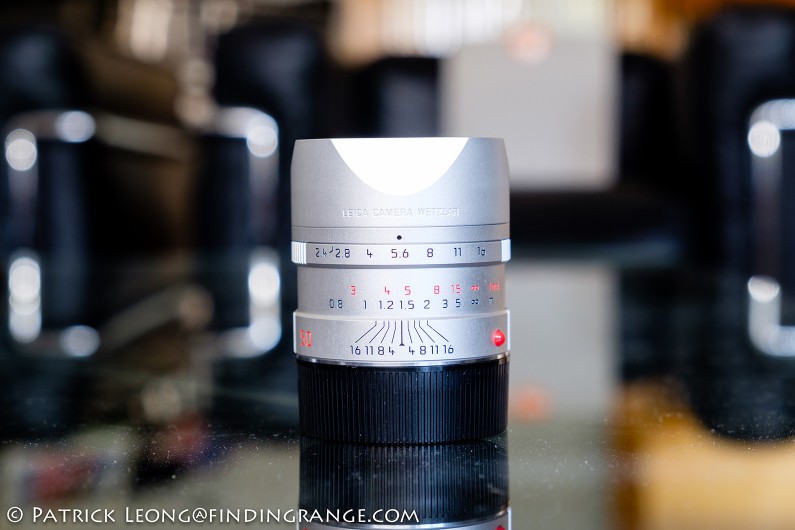
↑ The 50mm Summarit-M f2.4 lens with the lens hood on.
Considering the Summarit line is more budget friendly than other M lenses, I’m sure many of you think that there’s got to be some compromises in build quality. Well, while the 50mm Summarit-M is extremely well-made, it still doesn’t quite measure up in build to more expensive M lenses like the 50mm Summicron or Summilux. For instance, the focus ring is smooth but it just doesn’t have quite the same feel or smoothness as the Summicron or the Summilux. The aperture ring on the Summarit clicks distinctly in half stops but it’s definitely a little tinny sounding, and light in feeling when compared to the more expensive 50mm lenses. It’s also not as tight. Then there’s the sheer presence; I let my friend hold the Summarit, and she was extremely impressed by it. She thought it was the best built lens she’s ever held. Then I let her hold my Summilux. All she said to me was, “Wow”. Yes, the 50mm Summarit is aluminum while the silver versions of the Summicron and Summilux are brass, so of course, the more expensive 50mm lenses are going to be heavier. But it’s not just the weight that impressed her. It’s that feeling of a cost no object design if that makes sense. She played with the focus and the aperture rings. She played with the telescoping lens hoods. Everything feels just a step above the Summarit.
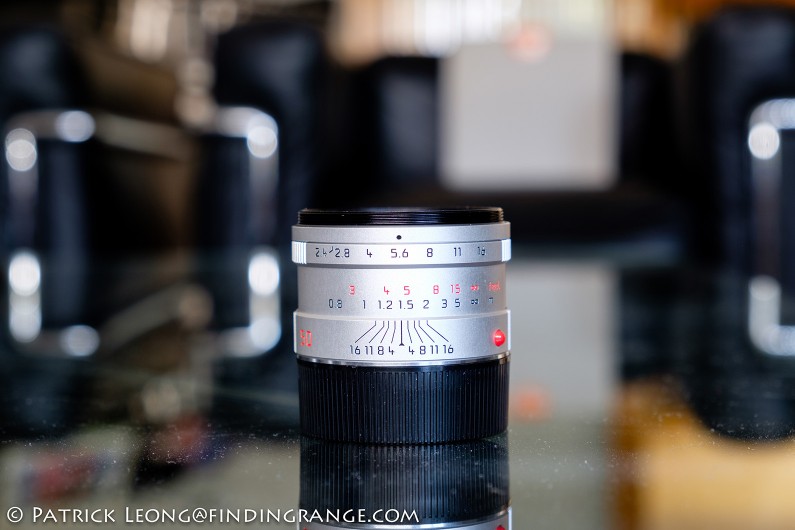
↑ The 50mm Summarit without the lens hood
With that said, the Summarit is still better built than pretty much everything else out there. Plus, it is the least expensive 50mm M lens, so a little cost cutting is expected. I still wholeheartedly support Leica for introducing the Summarit line. Personally, I’ve always loved this line of lenses. For Leica glass, you really are getting a lot of bang for the buck, especially in the image quality department, which I will discuss more about soon. Paying $7,000+ for a camera body without a lens can be a pretty hard pill to swallow, especially if you’re new to the system. So, the Summarit line is definitely great for someone who wants to try Leica glass with an M camera.
Plus, while I love the image quality that comes from modern Leica glass, and I prefer it over the older glass, I feel like the lenses have also grown in size. Take the 35mm Summicron ASPH, for example. The optics are downright impressive but at the same time, it’s definitely larger than the older versions like the 35mm Summicron IV. I have both, and while I prefer the optics of the ASPH version, I like the handling of the older version a lot more. What I particularly like about all the Summarit lenses in general is how compact they are for their respective focal lengths. They really remind me of the older classic Leica lenses in this regard.
This is why I also believe the 50mm Summarit-M is great for a veteran M user who has experienced using some of the older Leica glass. While the build quality may not be quite as impressive as the more expensive 50mm M lenses, as I said before, it’s still excellent, and I would be perfectly happy having this lens in my collection. The 50mm Summarit makes such a great lens to carry around because it is so light and compact. It is also very easy to use. The focus throw is short, so focusing is quick. It comes with a focusing tab, which I love. Focusing is also very accurate. I nailed the focus nearly every time with ease.
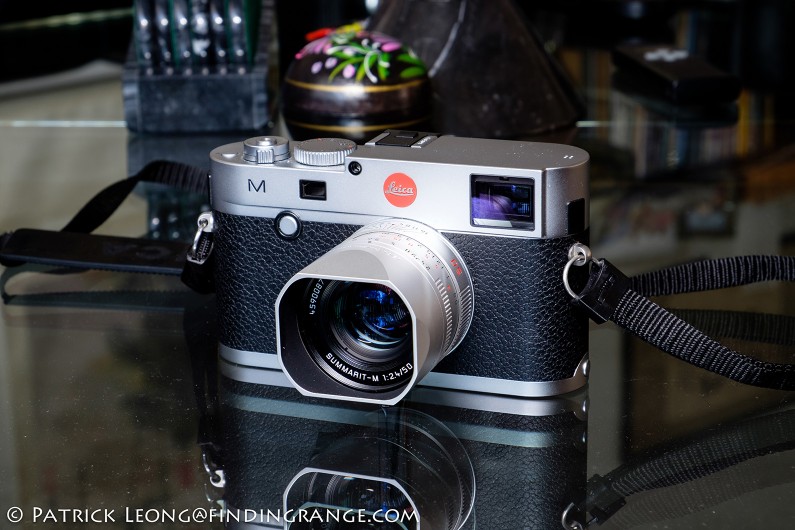
↑ The 50mm Summarit looks great on the M. It’s also very compact and light making it easy to use as an everyday lens.
Furthermore, the 50mm Summarit-M comes with one of the newer designed lens hoods, which I particularly like. It’s a screw on type, and stays on tight enough that it never comes off accidentally. There’s also a notch on the bottom of lens, so the hood is always perfectly aligned when you screw it on the lens. This is a much better design than some of the clip on hoods made by Leica in the past. It is also aluminum just like the lens. If you choose not to use the lens hood, you can simply unscrew it, which will leave the thread pattern behind, of course. But being that this is a Leica lens, Leica has also included a small metal ring with the lens, so you can screw it on to hide the thread pattern on the 50mm Summarit. This is the kind of attention to detail you get when you pay an arm and a leg for a lens.
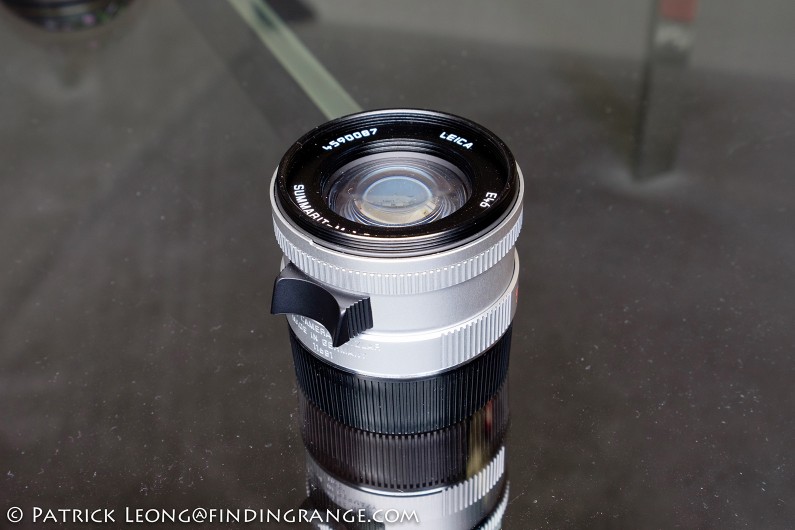
↑ There is a focus tab in the lens. Notice the small notch in the front of the lens: that’s so the hood is always aligned perfectly when you screw it in. If you’re using the lens without the hood, there’s also a metal ring that you can screw on in place to cover the thread on the front of the lens.
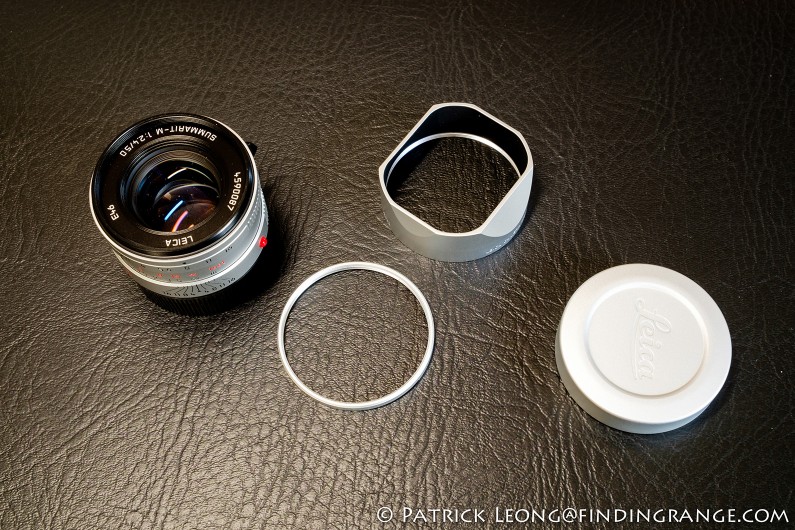
↑ The metal ring that you can screw on the thread pattern when you remove the hood.
To match the metal lens hood and ring, Leica has also included an aluminum lens cap similar in design to the one that comes with the Leica Q, and it fits over the lens hood or the lens itself. It’s great that Leica is starting to include more metal caps but personally, I’m not a huge fan of this lens cap. It is lined with felt, so when you attach it to the lens or hood, it won’t scratch either one. However, it just doesn’t attach on as smoothly as some of the classic brass caps. It actually takes a bit of effort, and there’s almost a scratchy sound to it. I have the 35mm Summicron ASPH Millennium Black Paint lens, and the brass cap that comes with it is also lined with felt, and when you put the cap on, it’s a very smooth and liquid-like action. No sound at all either. I cringe a little when I put the cap on the 50mm Summarit because it kind of reminds me of scratching a chalk board. I’d much rather have one of those sliding lens caps from the current 35mm Summilux ASPH but this is only a minor issue and personal preference.
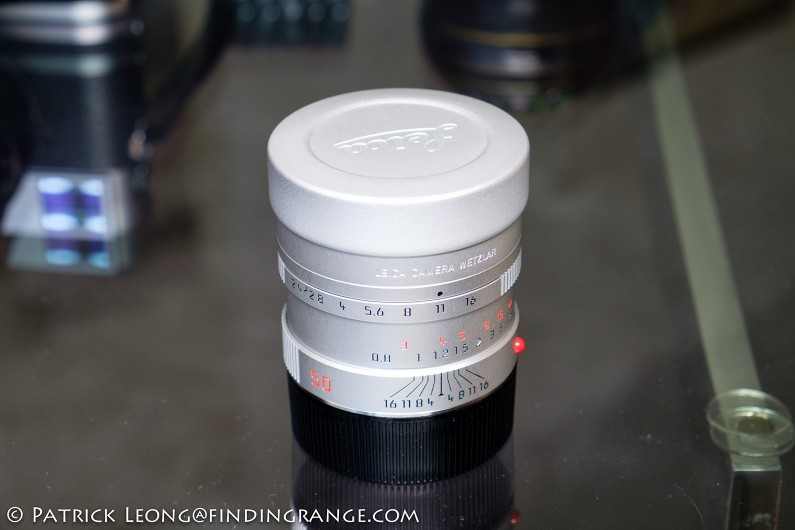
↑ This is the included lens cap.
Leica 50mm Summarit-M f2.4 Lens Image Quality:
Now that we’ve discuss the build, let’s talk about the image quality. I have to say, this lens has some killer optics. I’m sure many of you thought I would say this considering I am a huge Leica fan but it really is the truth. In fact, I was and still am a little surprised at how well this lens performs. I found this lens to be a contrasty little guy. I also absolutely love the beautiful color rendering. Seriously, the colors just pop. There is also so much depth in the photos. Everything looks three dimensional and alive. Distortion is also pretty much a non-issue.

↑ There is definitely a nice pop to this lens, and the way it renders colors is definitely one of it’s strengths.
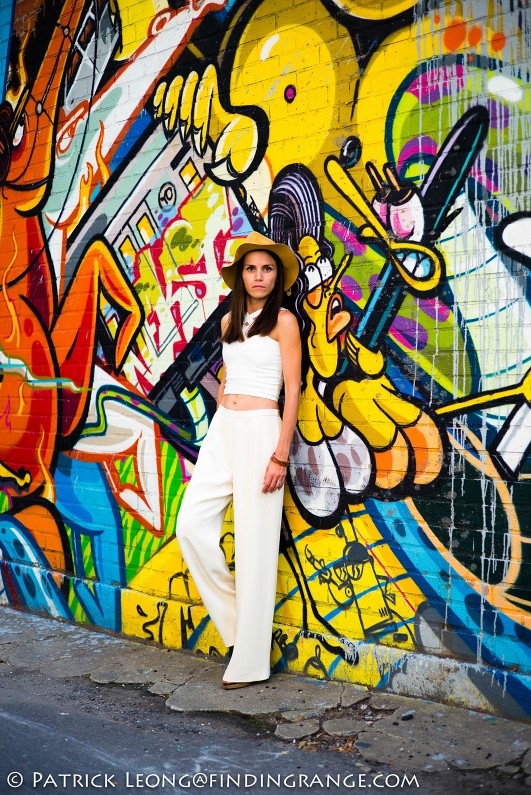
↑ Again, the colors really pop.

↑ This was actually a movie they were filming around Wall Street.
The 50mm Summarit-M is also extremely sharp. No one should have any problems using this lens throughout its aperture range. You’ll only be stopping down to increase depth of field, not because of lack of sharpness at the wider aperture range. When you’re shooting wide open, there is only a very slight loss of resolution in the corners but stopping down to just f2.8 sharpens up the corners nicely. I would say peak sharpness is obtained around f4 to 5.6 but feel free to stop this lens down more if you need to because I doubt you would see much of a difference in sharpness between f5.6 and f8, for example.

↑ This lens is insanely sharp.

↑ Here’s a photo taken at f2.4.
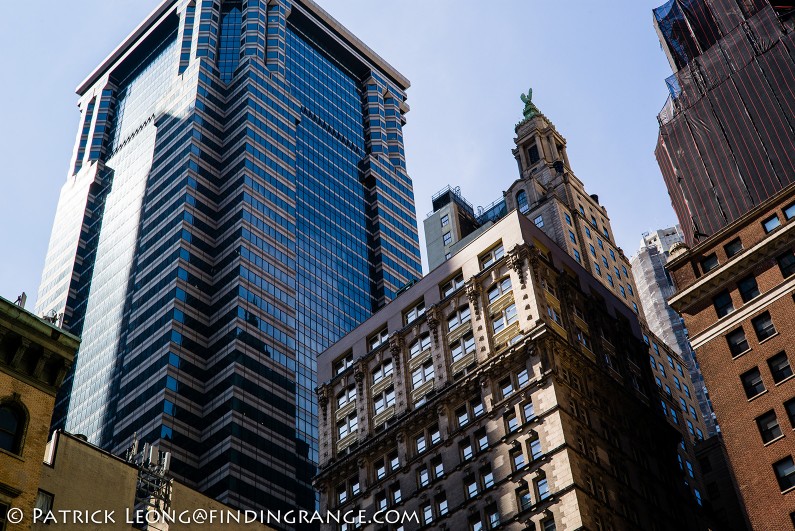
↑ Again, this lens retrieves plenty of detail.
While the 50mm Summarit is razor sharp, it still isn’t quite as sharp as the 50mm Summicron-M but in real world shooting, I don’t think it really matters much unless you’re doing direct scientific comparisons between the two lenses. Remember: we’re talking about two extremely sharp lenses. I have long term experience with both the 50mm Summicron and Summilux ASPH, since I’ve own them for a long time now, and I was completely satisfied with what the 50mm Summarit produced.

↑ Here’s another photo taken at f2.4.

↑ Again, this photo was taken wide open. It’s very easy to focus the 50mm Summarit. Kopi, the golden retriever, was actually moving quite a bit here.

↑ This was taken while I was walking on the High Line.
Of course, technical perfection is not everything. With computer aided design nowadays, many manufacturers can make a technically excellent lens. What really sets this lens apart, and makes it special to me is that it has character. There’s life to the images. There’s a certain glow. There’s a “wow” factor I get when I go home, and look at the images on my computer. Some might be skeptical of this, and that’s perfectly okay; to each their own but keep in mind that I don’t actually even own this lens. I have no stock in Leica. This is just what I’m getting from the 50mm Summarit, and that’s what makes it every bit a true Leica lens to me.
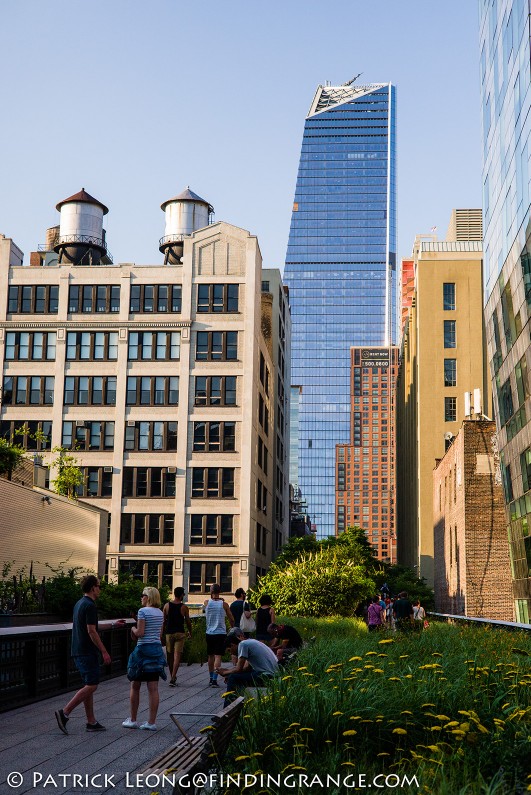
↑ The High Line during the summer.
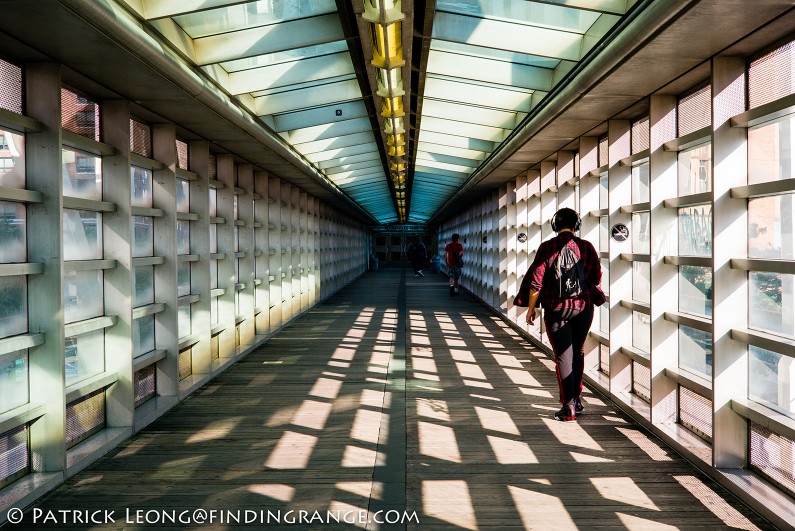
↑ Again, this lens is easy to focus fast. Plus, no matter what f stop you use, it’s always sharp.

↑ Downtown near in Battery Park City.
Leica 50mm Summarit-M f2.4 Lens Bokeh:
In terms of bokeh and shallow depth of field, I really love what comes out of the 50mm Summarit-M. Obviously, the depth of field isn’t as thin as say the 50mm Summicron or the 50mm Summilux but thanks in part to its 9 aperture blades, the bokeh is still buttery smooth and pleasing to the eyes. There’s really nothing harsh about it. Plus, you can still get a pretty shallow depth of field using f2.4. I love my 50mm Summilux ASPH. It is my favorite lens but with that said, when I was shooting wide open with the 50mm Summarit to get a shallow depth of field, I didn’t miss the Lux as much as I thought I would. To me, that says a lot about the 50mm Summarit.

↑ Here is a shot taken at f2.4.

↑ Here’s a closer shot taken at f2.4.

↑ Here’s an even closer shot taken wide open. The bokeh is really nice and smooth.
Leica 50mm Summarit-M f2.4 Lens Price:
As you can see, I really feel like this is one great little Leica lens, and at $1,795, it is currently the cheapest Leica branded 50mm lens that you can buy for the M system. In fact, if you think about it, the current f2.4 Summarit doesn’t really cost much more than the first generation version. The 50mm Summarit f2.5 was originally priced at $1,395 but if you wanted the lens hood, you had to purchase it separately for $139. The current Summarit comes with the lens hood. So, Leica isn’t really charging that much more considering how many years it’s been since the first version was released. Keep in mind that this new version is also built better than the previous version, so technically, you are getting more for the money.
However, it’s only $400 less than the 50mm Summicron-M, which is basically a benchmark lens. As I said, I own both the 50mm Cron and 50mm Lux ASPH. I originally bought the Lux to replace the Cron but the Cron is so darn good that I couldn’t bare to sell it. It’s really one of the best lenses I’ve ever used in my life. So, not only is the 50 Cron optically better than the 50mm Summarit, it’s also built better, it uses a smaller filter, it’s faster, and it’s not much larger than the 50mm Summarit. But the 50mm Summicron doesn’t come in silver anymore, so if you’re looking for a lens to match your silver camera body, maybe the Summarit will appeal to you more. Plus, the Summarit is lighter, and it comes with a focusing tab unlike the current Summicron.
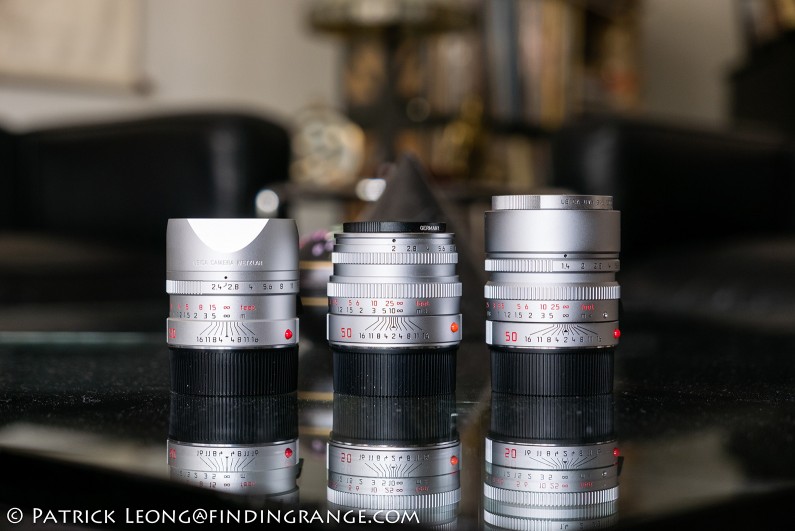
↑ The 50mm Summarit vs. the 50mm Summicron vs. the 50mm Summilux ASPH.
The other issue with the 50mm Summarit’s price is you can find a cheaper 50mm from other 3rd party manufacturers like Zeiss and Voigtlander. For only $860 (on rebate now), you can purchase the fantastic Zeiss 50mm f2 Planar in either black or silver. Another option would be to purchase the Zeiss 50mm f1.5 Sonnar for $1,201 (on rebate now as well). It also comes in black or silver. But there are some that want to experience what a Leica lens has to offer, and I completely understand. One of the main reasons I buy an M camera is because of the M lenses. This is where the 50mm Summarit would come into play. But if that’s the case, there is also another Leica option to consider.
The other option would be to purchase a used 50mm Summicron, which is readily available, and easy to find on the used market. But a new 50mm Summarit does come with a warranty, which is a big deal if you consider how much it can cost to fix Leica lenses. Plus, you don’t necessarily know what the previous owner did with the used lens. I’ve bought used before but all I’m saying is that you still have to be a little careful. Also, sometimes you just want a new lens, it’s as simple as that. There’s nothing wrong with that at all.
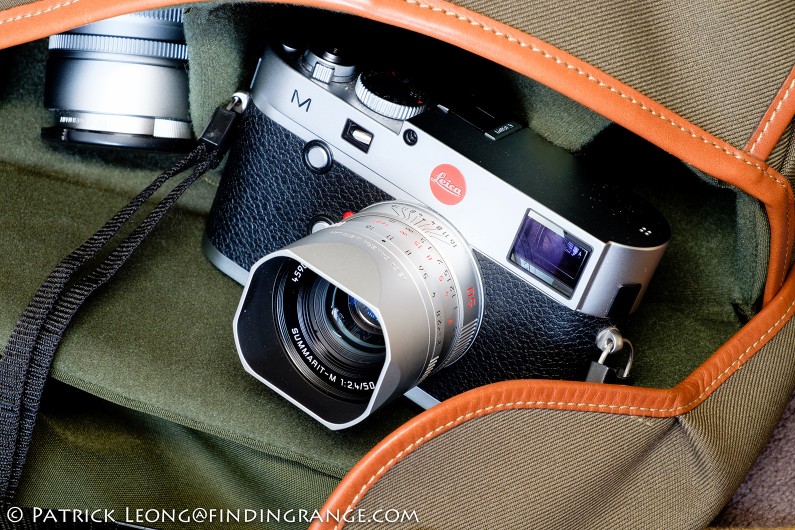
↑ I love that Leica still makes silver cameras and lenses ;).
Leica 50mm Summarit-M f2.4 Lens Pros and Cons:
Leica 50mm Summarit-M f2.4 Lens Pros:
- Built extremely well.
- Built from high quality materials.
- Compact and light.
- Great metal lens hood.
- Superb image quality.
- Great bokeh.
- Currently the cheapest Leica 50mm for the M system but still in every way a true Leica lens.
Leica 50mm Summarit-M f2.4 Lens Cons:
- Built well but not quite as well as its more expensive siblings.
- Not a fan of the lens cap.
- It’s currently the cheapest Leica branded 50mm lens but there are other options around this price range available that will yield excellent results as well.
Leica 50mm Summarit-M f2.4 Lens Verdict:
Overall, the Leica 50mm Summarit-M is a really excellent lens. It’s got all the features that I want in a lens like great build quality, attention to the little details, and of course, superb image quality. What I particularly love, which also goes for the rest of the Summarit line, is the size and overall feel of the lens. While modern Leica optics are technically better, I feel like sometimes the size and handling is sacrificed a bit to get the better optics. The 50mm Summarit is compact and light; it handles and feels like an older classic Leica lens. It even comes with a focusing tab unlike my 50mm Summicron-M.
Of course, like everything else, the 50mm Summarit isn’t perfect. It still has its issues. For instance, while it may be currently the cheapest Leica branded 50mm, its price of $1,795 puts it in direct competition with a lot of other great options. However, the qualities that it does have make it every bit a true Leica lens to me, and therefore, deserving of a place in the Leica M catalogue.
Thanks for taking the time to read my review! If you’re considering purchasing the 50mm Summarit, and my review helped you decide, please help support this site by purchasing from the links below or any mentioned in this review. It will not cost you anything extra. Thank you for your support!

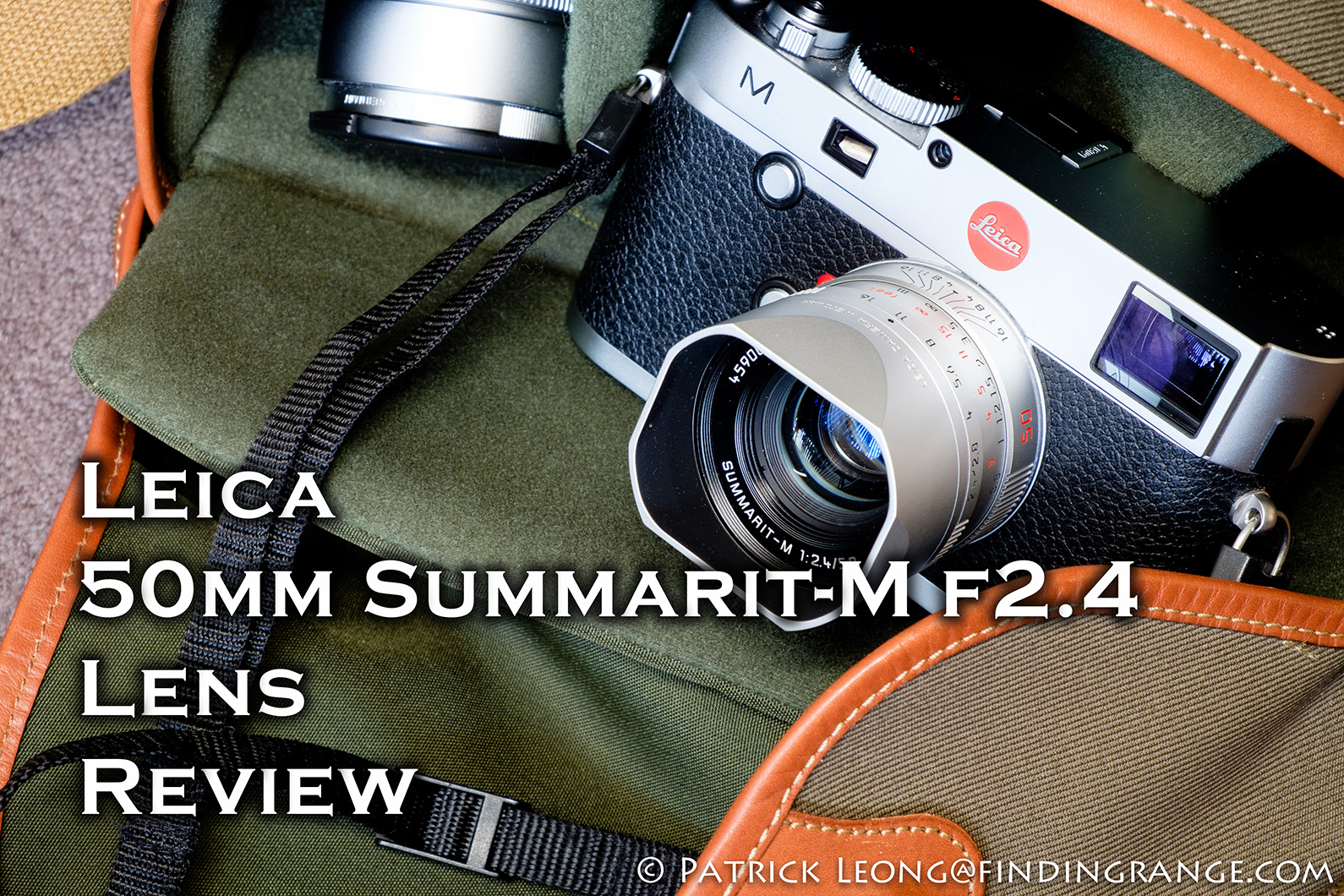
Hello Dear Patrick,
thanks again for your nice review, after read your different review about 50 lens,
I’ve buy a brand new 50 Summilux, and I’m very happy for that ! the best compromise for me after my 50 Summarit 2,5, 50 Summicron V5 and 50 Nokton 1.1….
My camera is a MM246 for information,
kind regards,
Sébastien
Hi Sébastien,
I appreciate you taking the time to read my reviews, and it’s great to hear from you again! The 50mm Summilux is a fantastic lens. I feel it’s a great compromise between those lenses as well. It’s fast but still compact, and easy enough to use as an everyday lens. It must be great on that Monochrom :). I hope you enjoy it, and feel free to share any images!
Best regards,
Patrick
Hi Patrick,
Nice review! I checked the price of the 50mm Summarit and for $1800 is pretty good I think. I couldn’t believe it at first but my wife agreed to me purchasing the X1D with 1 lens, so no need to sell any gear. But it got me thinking, for that money i could get a 50, 90 summarit and an M monochrome. But still leaning on the Hassy for now, but please don’t tell me there’s refresh on the M looming by hehe.
Dane
Thanks, Dane!
I wouldn’t be surprised if there is a new M coming out soon, since the current one has been around for 4 years now. In fact, I told my dealer last year to get me one when it comes out but I canceled it already. But even then, the Monochrom is new, so it should be around for a few more years. The Monochrom is always a generation behind.
As far as I’m concerned, I am sold on the X1D. I pre-ordered it a few weeks ago with both lenses, and I have no plans of getting a new M. I might even buy the 30mm when it comes out but only if I don’t see anything wider in their upcoming roadmap. It’s absolutely everything I’ve ever wanted in a camera. It’s still hard to believe Hasselblad was the one that came out with it :).
Best,
Patrick
Hi Patrick,
Ming Thein posted some X1D photos using the 90mm. Now I think I’ll go with the 90mm first then buy the 45mm at the end of year. You’re right about the X1D, after spending some time shooting MF film I sometimes wish I could afford a digital back system. I’ll still keep shooting film since I like the retro look I get from the Roleiflex but I want to start shooting and archiving using the best possible quality I can. where did you pre order yours? Time to do the same with the 90mm! Or the 45mm? If only I got the go signal for both lens….
Dane
Hi Dane,
The 90mm is a good lens but I wouldn’t discount the 45mm. Trust me, it’s going to be very good. Let’s just say the performance is not quite up there with the 90mm, what does that really mean? Both are still superb optics, so in my opinion, it’s like comparing a Lamborghini with a Ferrari. I would be happy with either one :). All these lenses have been designed for sensors well over 100mp. Plus, this is digital medium format and a Hasselblad! I have high hopes for both lenses…I think the image quality is simply going to be epic! So, if you’re not sure yet, take your time to decide. If you’re going to use just one lens for a while, the 45mm is probably going to be more versatile though.
I pre-ordered mine at B&H Photo. I am eagerly awaiting it :).
Best,
Patrick
Irritating review for.
Basically saying the summarit is good but not as good as my summicron and summilux which i own.
In other words to me its a bias review.
Hi,
Nice review.
I’ve been using this 50 summarit for more than a wile before getting a very good deal on a 50 ‘ cron (lenshood retractable version). Both are amazing lens. I’m not a scientist photog but prefer to shoot i to see by feel if i love a lens or not.But I recently did some side by side shots on tripod with my M10 and manual exposure on raw at full aperture and around 2.4 – 2.8 with both, and same focus distance, about 2m. For me bokeh and sharpeness is almost same. I actually prefer the out of focus rendering of the summarit a little more, less nervous i might say. I did a blind test comparaison with 2 photographer friends who also prefer the summarit more (out of focus rendering and colors rendering). The summarit is more color neutral or just little warmer (and more pleasing).
BUT, the mean difference between the 2 lenses, and I’m very surprise no one talk about that, is that the summarit looks more a 49-48mm meaning is little wider than the ‘cron. It makes a huge difference as the viewfinder lines for the 50 are far from being perfect (still no distance correction), and so give little extra room out of the frame. It’s very useful and make the framing little easier 🙂
The size and weigh is also in favor of the summarit. All in all, the 2.4 has a lot, specially considering the lens with hood on is same size as the ‘cron without lenshood out. the only thing that goes in the ‘cron side is the better focusing ring, the resistance and smoothness is just perfect, while the summarit is good but doesn’t have same feeling (but has the focus tab that i love).
FOR ME, the summarit 50 2.4 will probably be the keeper.
Regards,
Hi Pask,
Thanks for taking the time out to read it! Apologies for the late reply. I hurt my back recently.
The 50 Summarit is a great lens. I always said Leica did good by coming out with the Summarit-M line, and I’d love to see more in the future. I love the focus tab too. I kept my older Cron when I bought the new one, and it has the scallop tab on the bottom. I wish my newer version had that as well. I’m glad you love yours, and I hope you continue to enjoy it for a very long time! Thanks for stopping by, and sharing your experience with us!
Best,
Patrick
Read this review today (2•23•2024). Excellent. I have the 50 Summarit 2.4 as well as a new in box 50 ‘Cron Safari and 50 ‘Lux Silver Chrome. The 50 ‘Lux is way too heavy for me; tips my M11 forward noticeably. I’ve been reluctant to use the 50 ‘Cron Safari thinking it may keep its value for a future sale. I’ve not used my 50 Summarit only because I’m not a big 50 shooter. After reading this maybe it’s time for me to get out with that lens and give it a try. I do have a 35 Summarit 2.4 and it is fabulous. Highly recommended.